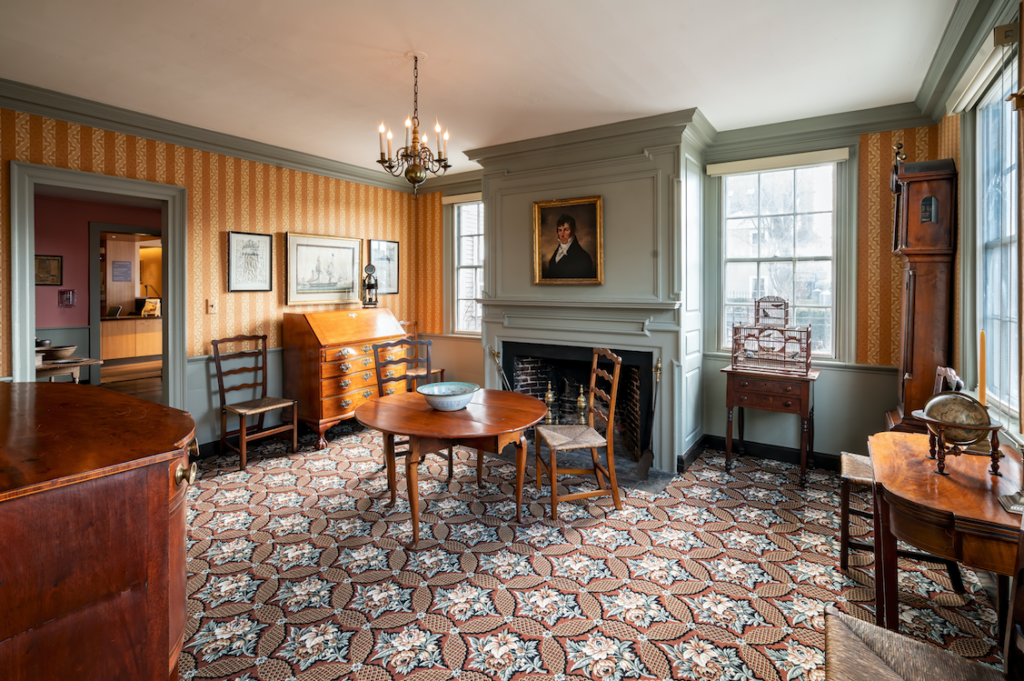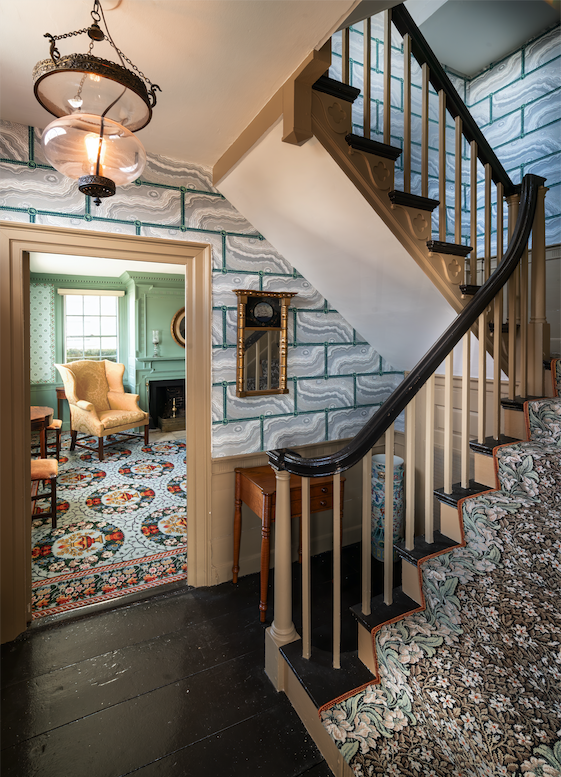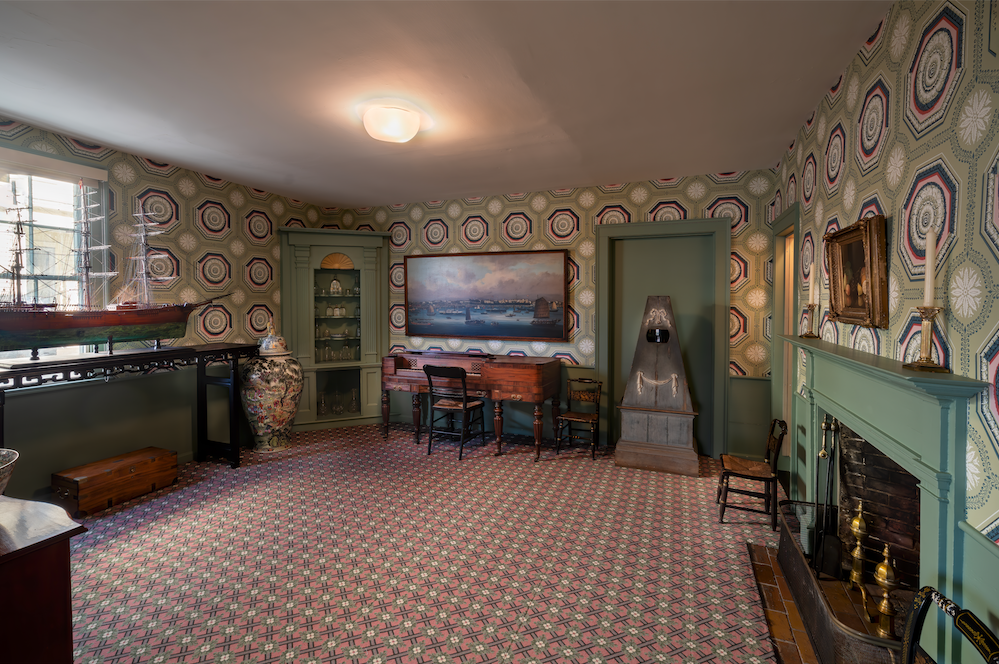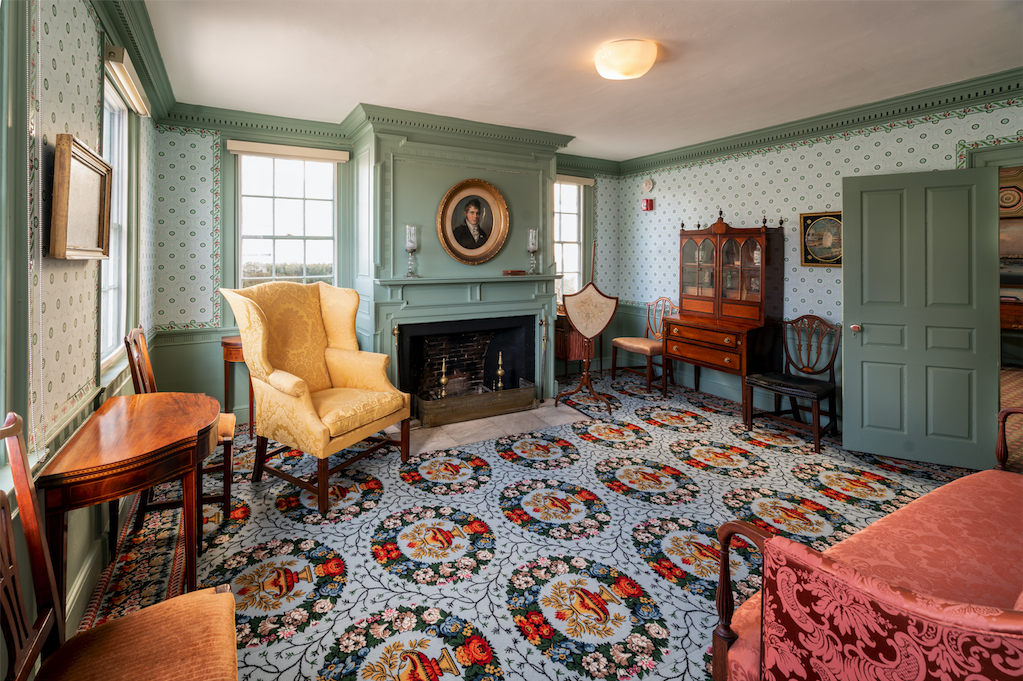On January 29, the Davis House re-opened its doors to showcase its latest round of renovations, adding in plush period-designed carpeting on the floors.
In recent years, the Cape Ann Museum has worked diligently to preserve and restore its historic Captain Elias Davis House (1804). The house features four fully furnished period rooms that explore the history of life in Gloucester and Cape Ann during the early Federal period.
The investment has helped secure the structure and safeguard the artifacts displayed within the House, as well as allowing docents and staff members to more effectively interpret the space and the lives of the families who once inhabited it.

While floor coverings were relatively rare in New England homes in the seventeenth and early eighteenth centuries, they became fashionable in flourishing seaport communities like Gloucester when construction of the Davis House began in 1796. During his career, Capt. Davis traveled frequently to Europe including several voyages to London, where popular and stylish carpeting was readily available. Following his passing in 1821, an inventory taken of his house’s contents reveals that in addition to rugs and mats, the first and second floors also featured carpeting, proven by the existence of nail holes surrounding the perimeter of these rooms.

Although no traces of the original carpeting remain, the Museum worked with J.R. Burrows & Co. to select four types of Brussels carpeting woven in period patterns known to have been used in other historic structures in the region which have now been installed in the house’s dining room, front parlor, back parlor, and central staircase. As scholar Nina Fletcher Little once wrote, the term Brussels refers to the carpeting’s weave (rather than place of origin) that “was composed of colored yarn drawn in up close, uncut loops to form the pattern.”
The selected samples are rich in color and feature vibrant designs incorporating flowers and vines, as well as geometric and architectural shapes. A decorative border was also installed in the front parlor to complement the paper board on the room’s walls. While twenty-first century tastes may dictate that the carpet patterns clash with the wallpaper, the Davis family and their friends would have found the overall effect very pleasing.
“We are thrilled that the renovations have brought the house back to life so present-day visitors can appreciate how homes were decorated at that time,” said Oliver Barker, Cape Ann Museum’s director. “We are so proud of the careful and thoughtful work that has made this a beautiful addition to our collection.”

The Davis House is shared with visitors through docent tours, available Tuesday through Saturday at 11 a.m. and 2 p.m. and on Sunday at 2 p.m. The trained docents discuss the architecture of the building, the social and economic history of Cape Ann during the early 1800s, the families who lived in the house, and the significance of the artwork and artifacts displayed in the period rooms.

